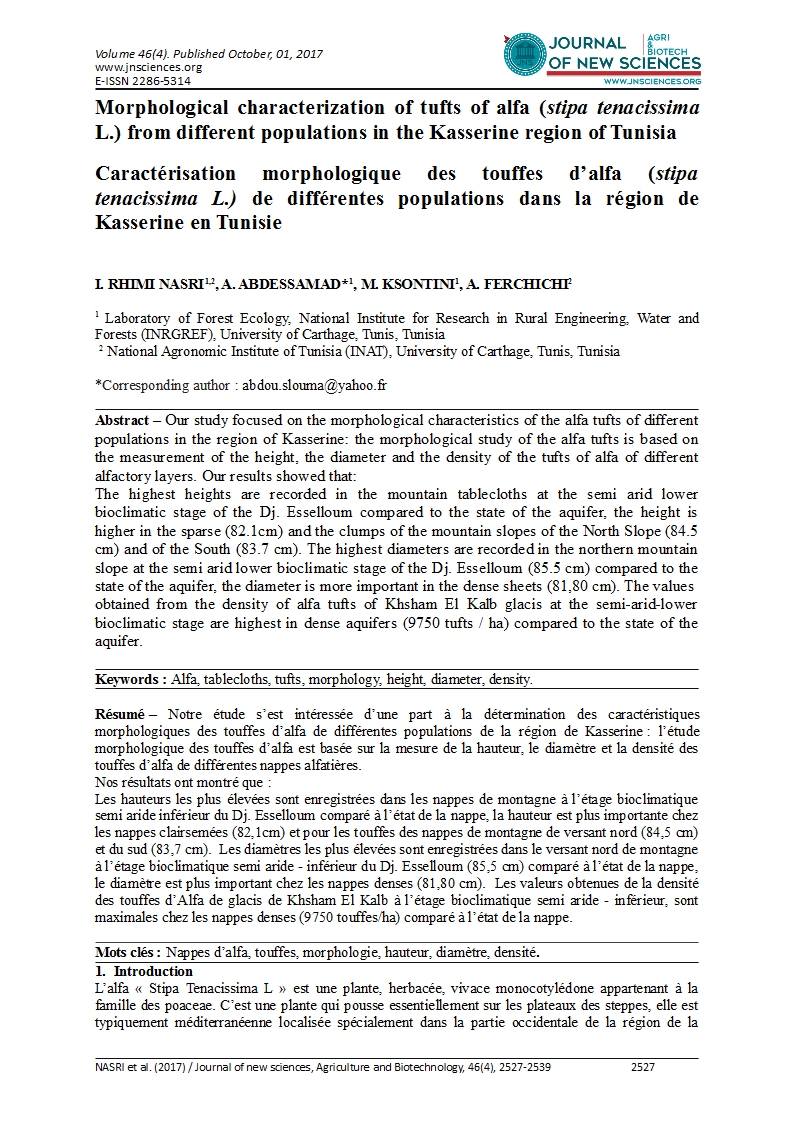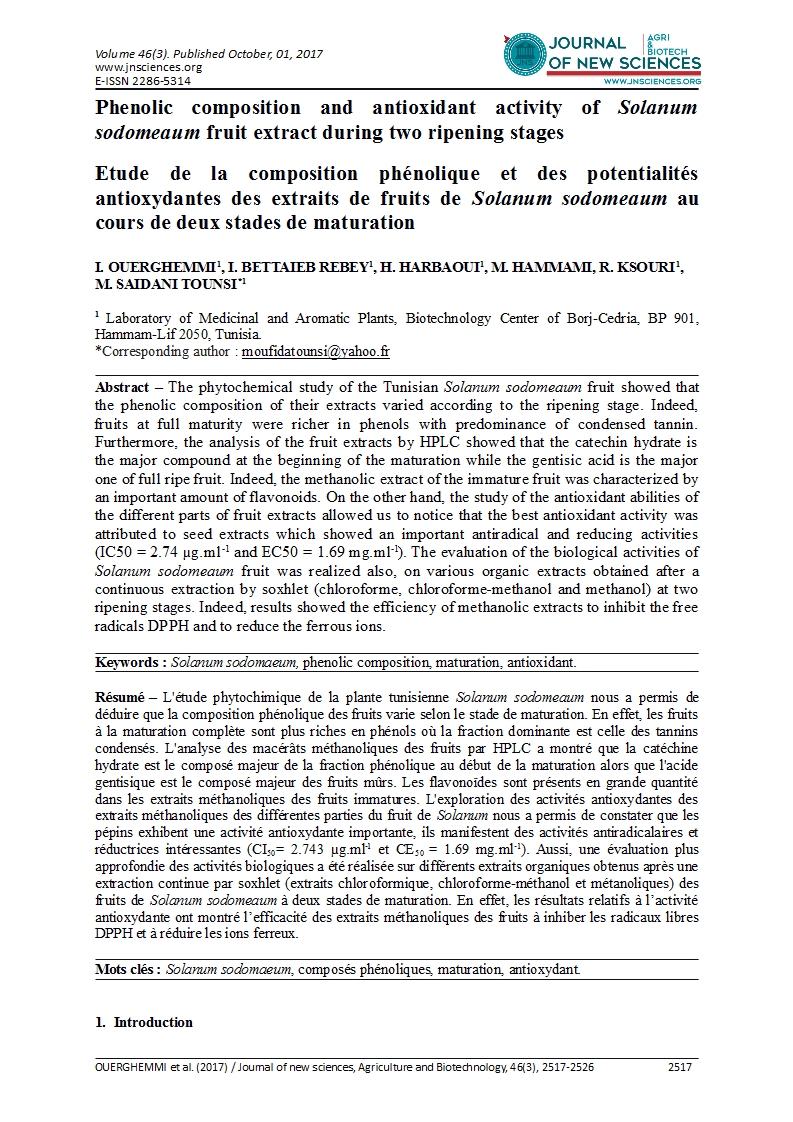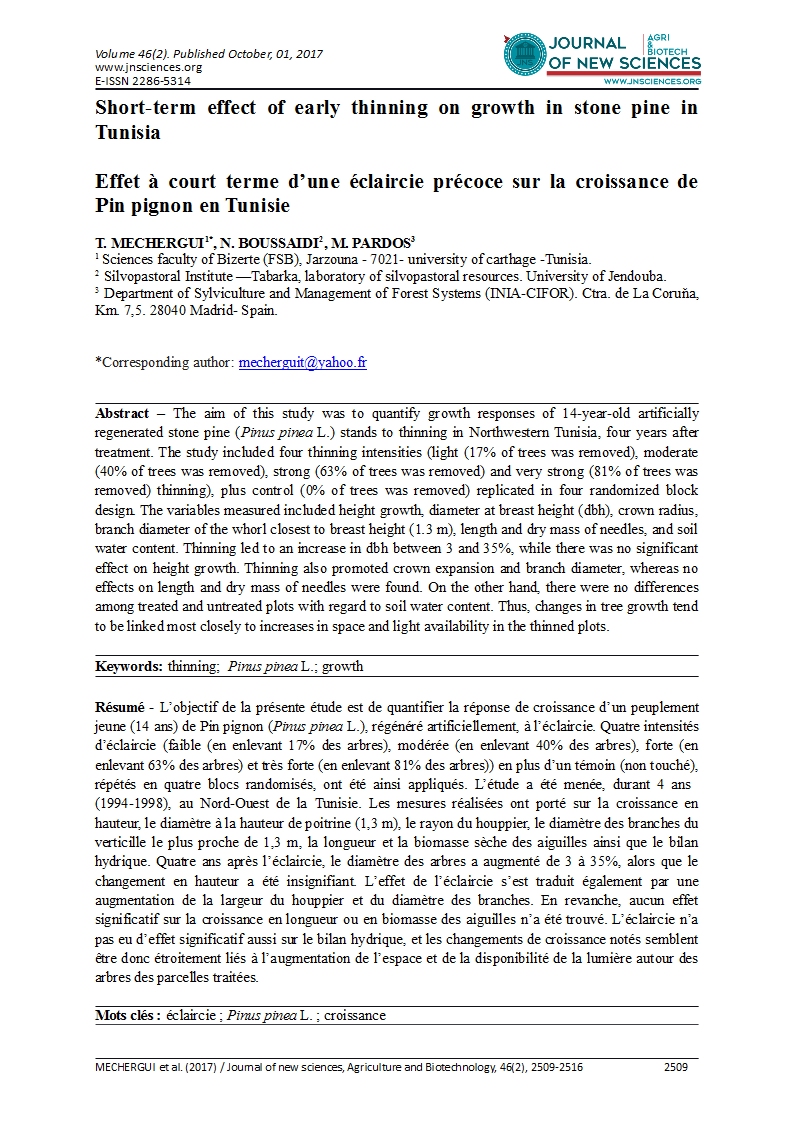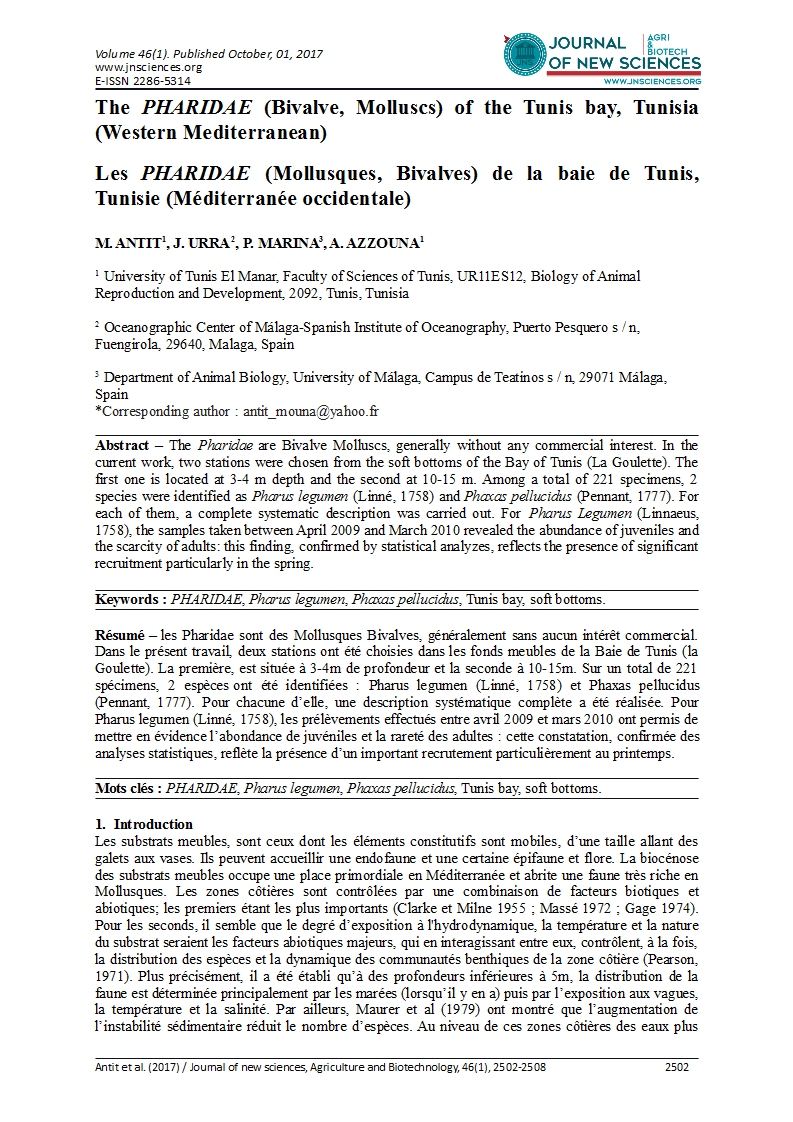- Category: Volume 46
- Hits: 4525
Effect of carvacrol on bacterial growth in vitro, on zootechnical performances and carcass yield of the young rabbits in growth during hot seasons
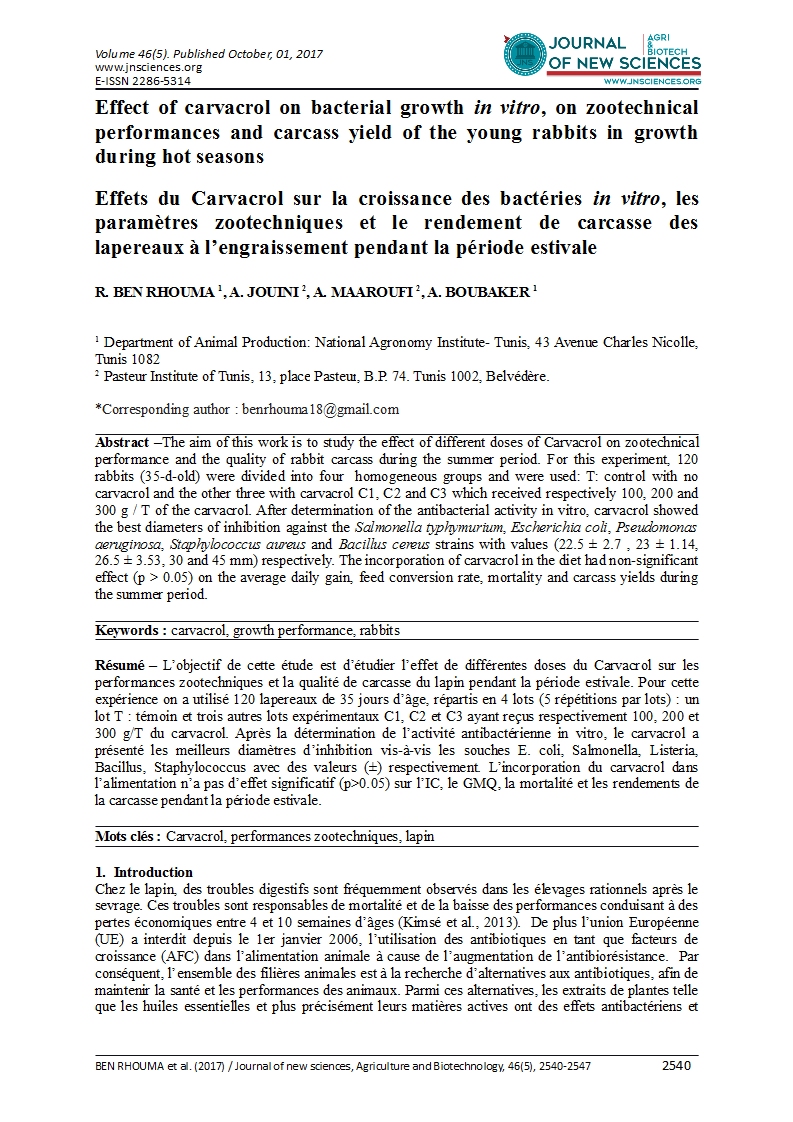
Effets du Carvacrol sur la croissance des bactéries in vitro, les paramètres zootechniques et le rendement de carcasse des lapereaux à l’engraissement pendant la période estivale
R. BEN RHOUMA 1,
A. JOUINI 2,
A. MAAROUFI 2,
A. BOUBAKER 1
1 Department of Animal Production: National Agronomy Institute- Tunis, 43 Avenue Charles Nicolle, Tunis 1082
2 Pasteur Institute of Tunis, 13, place Pasteur, B.P. 74. Tunis 1002, Belvédère.
Abstract –The aim of this work is to study the effect of different doses of Carvacrol on zootechnical performance and the quality of rabbit carcass during the summer period. For this experiment, 120 rabbits (35-d-old) were divided into four homogeneous groups and were used: T: control with no carvacrol and the other three with carvacrol C1, C2 and C3 which received respectively 100, 200 and 300 g / T of the carvacrol. After determination of the antibacterial activity in vitro, carvacrol showed the best diameters of inhibition against the Salmonella typhymurium, Escherichia coli, Pseudomonas aeruginosa, Staphylococcus aureus and Bacillus cereus strains with values (22.5 ± 2.7 , 23 ± 1.14, 26.5 ± 3.53, 30 and 45 mm) respectively. The incorporation of carvacrol in the diet had non-significant effect (p > 0.05) on the average daily gain, feed conversion rate, mortality and carcass yields during the summer period.
Keywords : carvacrol, growth performance, rabbits
Résumé – L’objectif de cette étude est d’étudier l’effet de différentes doses du Carvacrol sur les performances zootechniques et la qualité de carcasse du lapin pendant la période estivale. Pour cette expérience on a utilisé 120 lapereaux de 35 jours d’âge, répartis en 4 lots (5 répétitions par lots) : un lot T : témoin et trois autres lots expérimentaux C1, C2 et C3 ayant reçus respectivement 100, 200 et 300 g/T du carvacrol. Après la détermination de l’activité antibactérienne in vitro, le carvacrol a présenté les meilleurs diamètres d’inhibition vis-à-vis les souches E. coli, Salmonella, Listeria, Bacillus, Staphylococcus avec des valeurs (±) respectivement. L’incorporation du carvacrol dans l’alimentation n’a pas d’effet significatif (p>0.05) sur l’IC, le GMQ, la mortalité et les rendements de la carcasse pendant la période estivale.
Mots clés : Carvacrol, performances zootechniques, lapin

